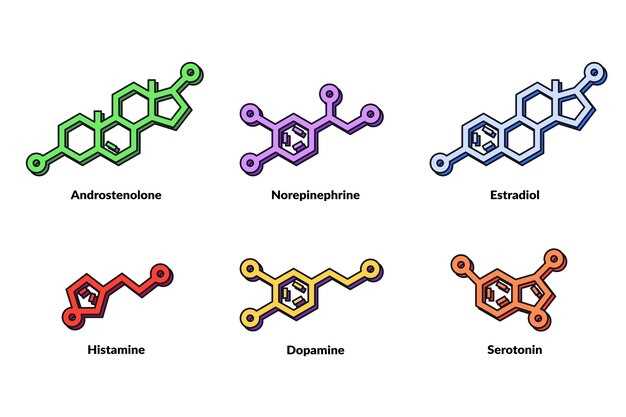
Discover how the unique combination of two powerful medications can revolutionize your treatment approach. The potential synergistic interaction between pregabalin and venlafaxine offers a new perspective on managing various conditions and enhancing overall well-being.
With the harmonious blend of pregabalin and venlafaxine, patients can experience an unparalleled sense of relief from their symptoms. This dynamic combination targets multiple physiological pathways, effectively addressing the underlying causes of various disorders.
By integrating pregabalin and venlafaxine into your treatment regimen, you can exploit the amalgamation of their distinct mechanisms. Together, they work synergistically to produce enhanced therapeutic outcomes, providing a comprehensive solution for the complex nature of your condition.
Unlock the potential of pregabalin and venlafaxine in tandem to take control of your health. The significant benefits from their combined action will empower you to lead a more fulfilling and pain-free life.
Understanding the dynamics between pregabalin and venlafaxine

In this section, we will explore the intricate relationship between these two substances and delve into how they interact with each other. By comprehending these interactions, you can make informed decisions about their combined usage.
Overview of pregabalin
Pregabalin is a medication that offers relief for various conditions like neuropathic pain, epilepsy, and generalized anxiety disorder. It exhibits its effects by modulating specific neurotransmitters in the brain, helping to reduce excessive nerve activity and prevent seizures.
Overview of venlafaxine
Venlafaxine belongs to the antidepressant class of medications and is commonly prescribed to treat conditions such as major depressive disorder and anxiety disorders. It functions by regulating certain chemicals in the brain, including serotonin and norepinephrine, which play vital roles in mood regulation.
Both pregabalin and venlafaxine can provide significant symptomatic relief for individuals suffering from various conditions, making them valuable options when conventional treatments may not be effective alone.
| Interactions between pregabalin and venlafaxine | |
|---|---|
| 1 | Potential pharmacodynamic interaction – The combined use of these substances might lead to an enhanced effect on the neurotransmitters in the brain. This interaction could intensify the therapeutic benefits or increase the risk of side effects. Therefore, caution and proper medical supervision are advised when using them concomitantly. |
| 2 | Pharmacokinetic interaction – Pregabalin and venlafaxine might influence each other’s absorption, distribution, metabolism, and elimination within the body. This interaction can impact the concentration of the substances in the bloodstream and alter their overall effectiveness. Close monitoring of dosage and potential adjustments are crucial to optimize treatment outcomes. |
It is vital to consult your healthcare professional before considering the simultaneous use of pregabalin and venlafaxine. They will evaluate your specific situation, carefully weigh the potential benefits and risks, and tailor a treatment plan that suits your needs best.
Remember, understanding how these substances work individually and in combination is key to ensuring safe and effective management of your condition.
What is venlafaxine?
Venlafaxine is a medication that belongs to a class of drugs known as serotonin-norepinephrine reuptake inhibitors (SNRIs). It is commonly used to treat various conditions, including depression, anxiety disorders, and panic disorder.
When discussing venlafaxine, it is important to understand its mechanism of action. Venlafaxine works by increasing the levels of certain neurotransmitters, such as serotonin and norepinephrine, in the brain.
In simpler terms, venlafaxine helps to regulate the communication between nerve cells in the brain, which can have a positive impact on mood and emotions. By targeting specific neurotransmitters, it provides relief from symptoms associated with depression and anxiety disorders.
This medication is available in different forms, such as extended-release capsules, tablets, and oral solutions. The dosage may vary depending on the condition being treated and individual patient factors. It is crucial to follow the prescribed dosage and guidelines provided by your healthcare professional.
If you have any concerns or questions regarding the use of venlafaxine, it is recommended to consult with your healthcare provider for personalized guidance and support.
What is venlafaxine?
Have you ever wondered about the effects that certain medications can have when they are taken together? One such combination that is often prescribed by doctors is the use of pregabalin and venlafaxine. Today, we will focus on understanding how these two medications interact with each other.
Venlafaxine, also known by its brand name Effexor, is a medication classified as a serotonin-norepinephrine reuptake inhibitor (SNRI). This means that it works by increasing the levels of certain chemicals in the brain, namely serotonin and norepinephrine, which are responsible for regulating mood.
The interaction between pregabalin and venlafaxine is an intriguing topic. When used together, these medications may affect each other’s efficacy and potentially cause side effects. It is important for individuals who are prescribed these medications to understand the potential risks and benefits of their combination.
While pregabalin is primarily used to treat certain types of seizures and nerve pain, venlafaxine is commonly prescribed for conditions such as major depressive disorder and generalized anxiety disorder. Both medications have their own mechanisms of action, but when used in conjunction, their effects may be altered.
The interaction between pregabalin and venlafaxine can vary depending on multiple factors, including the individual’s medical history, dosage, and the presence of other medications. It is crucial for healthcare professionals to carefully consider these factors before prescribing these medications together.
In conclusion, understanding the interaction between pregabalin and venlafaxine is essential for anyone who may be prescribed both medications. By recognizing the potential risks and benefits of their combination, individuals can work closely with their healthcare providers to ensure the most appropriate and effective treatment plan.
How do pregabalin and venlafaxine interact?

The combined use of pregabalin and venlafaxine leads to a unique interplay between these two medications. Their interaction is characterized by a complex synergy that influences various aspects of their effects on the body.
When pregabalin and venlafaxine are taken together, their combined impact affects the central nervous system and neurotransmitter levels. This interaction may lead to enhanced modulation of neuronal activity, resulting in a more pronounced effect on mood and pain management.
Furthermore, the interaction between pregabalin and venlafaxine also encompasses the potential for an altered pharmacokinetic profile. This means that the way these medications are absorbed, distributed, metabolized, and eliminated within the body might be influenced by their co-administration.
It is important to note that the exact mechanism of interaction between pregabalin and venlafaxine is still being studied and understood. However, healthcare professionals are closely monitoring this interaction to provide optimal treatment outcomes for patients who require both medications.
Considering the synergistic effects and potential pharmacokinetic influence of combining pregabalin and venlafaxine, it is essential for healthcare providers to carefully evaluate each individual’s medical history, current condition, and any potential contraindications or side effects. By considering these factors, healthcare professionals can make informed decisions regarding the appropriate dosage and frequency of administration for patients who may benefit from the combination of pregabalin and venlafaxine.
Considerations for using pregabalin and venlafaxine together
When it comes to managing certain conditions, the combination of pregabalin and venlafaxine can be an effective option to consider. This unique combination provides a comprehensive approach to addressing the symptoms associated with these conditions, allowing patients to potentially experience improved quality of life.
1. Enhanced Symptom Relief
By combining these medications, individuals may benefit from an increased level of symptom relief. This may include a reduction in pain, improved mood, and a greater overall sense of well-being. The complementary nature of pregabalin and venlafaxine allows for a more comprehensive approach to managing symptoms, potentially leading to better outcomes for patients.
2. Individualized Treatment Approach
One of the key advantages of using pregabalin and venlafaxine together is the ability to tailor the treatment approach to the individual patient. Each person may respond differently to medications, and this combination allows for flexibility in adjusting the dosage and timing to best suit their needs. This personalized approach can offer patients a greater sense of control over their treatment and may lead to improved response rates.
3. Safety Considerations
As with any medication, it is essential to consider the safety profile of pregabalin and venlafaxine combination therapy. While generally well-tolerated, it is important for healthcare professionals to carefully monitor patients for any potential side effects or adverse reactions. This close supervision ensures the optimal balance between symptom relief and minimizing any potential risks.
- Regular monitoring of vital signs and laboratory tests can help detect any changes or potential interactions between these medications.
- Patients should be advised to report any unusual symptoms or concerns to their healthcare provider promptly.
- Dosage adjustments may be necessary based on individual response and tolerability.
In conclusion, the combination of pregabalin and venlafaxine offers a unique opportunity for comprehensive symptom management in certain conditions. With the potential for enhanced relief, individualized treatment approaches, and careful safety considerations, this combination therapy can be a valuable option for those seeking an effective solution.
